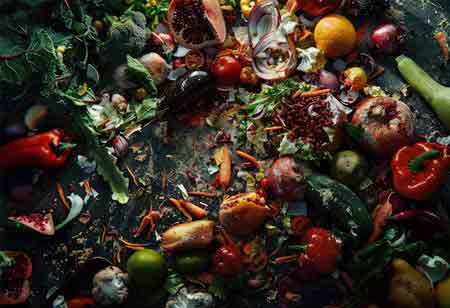THANK YOU FOR SUBSCRIBING
Be first to read the latest tech news, Industry Leader's Insights, and CIO interviews of medium and large enterprises exclusively from Food and Beverage Tech Review
The Impact of Biomaterials on Reducing Food Waste in the Supply Chain
Various strategies are being explored to tackle food waste, including technological approaches aimed at producing more food with fewer inputs, such as water and agrochemicals, while reducing waste throughout the food supply chain.

By
Food and Beverages Tech Review | Friday, January 10, 2025
Stay ahead of the industry with exclusive feature stories on the top companies, expert insights and the latest news delivered straight to your inbox. Subscribe today.
Biomaterials are substances designed to take specific forms that, either independently or as part of a complex system, are used to direct therapeutic or diagnostic processes in human or veterinary medicine by managing interactions with biological system components.
Fremont, CA: Various strategies are being explored to tackle food waste, including technological approaches aimed at producing more food with fewer inputs, such as water and agrochemicals, while reducing waste throughout the food supply chain. One particularly promising solution is precision agriculture, which combines nanotechnology, artificial intelligence (AI), robotics, geolocation, smart sensors, and big data analysis to address the global food security challenge. Biomaterials are typically described as substances designed to take on specific forms that, either independently or as part of a larger system, are used to guide therapeutic or diagnostic processes in human or veterinary medicine by controlling interactions with biological components.
Precision agriculture, wherein nanotechnology and artificial intelligence (AI) paired with robots, geolocalization, smart sensors, and big data analysis, might hold the key to solving the global food security crisis, is particularly intriguing.
Biomaterials are typically defined as a substance that has been created to adopt a shape that, alone or as part of a complex system, is utilized to guide the course of any therapeutic or diagnostic operation in human or veterinary medicine by controlling interactions with components of biological systems.
Check Out This : Environmental Business Review
Numerous research projects have already demonstrated the ability to engineer biomaterials into advanced formats, particularly those that are sustainable and have a circular life cycle, such as structural biopolymers, to benefit a wide range of agricultural and food industry practices, including seed enhancement, precision payload delivery in plants, perishable food preservation, & food spoilage detection. They present and analyze biomaterial design concepts, developing micro-/nanofabrication technologies, and the benefits and drawbacks of various delivery, protection, and sensing platforms in each part.
Seed enhancement technology
This section addresses various recent breakthroughs in modifying the seed microenvironment using biomaterials through seed priming and seed coating, as well as the use of nanotechnology and nanofabrication in seed improvement technologies (for instance, for nanofiber-based seed enhancement).
Developing improved seed coverings that combine biodegradation with encapsulation, preservation, and sustained release of payloads (especially plant growth-promoting microorganisms) to the seeds and their rhizosphere achieves enhancement.
Plants receive precise multi-scale payload delivery.
Precision delivery of agrochemicals to selected plant tissues and organelles using microneedle- and nanoparticle-based platforms that meet plant demands while avoiding runoff and environmental side effects are critical in agriculture to ensure high crop yields minimizing environmental harm consequences.
Food preservation coatings that are edible.
This section deconstructs the most often used food coating components – polysaccharides, proteins, lipids, and composites – explains their benefits and drawbacks and explores their uses in diverse food systems.
The early degradation of perishable goods accounts for major food waste. For example, many fruits and vegetables have a minimal shelf life after harvest due to intense metabolic activity and significant microbial/fungal contamination. Traditional therapies such as cryopreservation, subjection to chemical fungicides, the inclusion of synthetic preservatives, changed environment packing, and osmotic treatments, among others, have proven beneficial in extending the shelf life of perishable food.
I agree We use cookies on this website to enhance your user experience. By clicking any link on this page you are giving your consent for us to set cookies. More info







